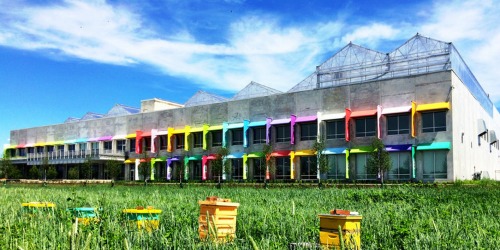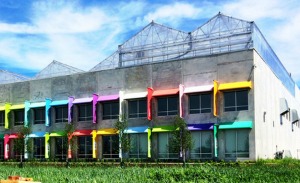By Pris Mims, Class of 2000
Quite a lot!
On February 23rd, the Union League Club and the League of Women Voters of Chicago sponsored a “Chicago in Focus” event. David Reifman, the Commissioner for the Department of Planning and Development (DPD), gave a whirlwind overview of the many activities in which this department of our city government is involved. All the city’s functions pertaining to economic development, land use, building and workforce development, and city planning have been placed in this department to provide a holistic approach.
Department of Planning and Development (DPD), gave a whirlwind overview of the many activities in which this department of our city government is involved. All the city’s functions pertaining to economic development, land use, building and workforce development, and city planning have been placed in this department to provide a holistic approach.
Economic Engine
Mr. Reifman said that while the department has a strong focus on neighborhood development, the downtown area is clearly the economic engine that drives all development. Over the past several years, 33 companies have moved their headquarters to our downtown. A key reason is accessibility; the proximity of O’Hare and Midway airports facilitate their connection to the rest of the country, and, indeed, to the world. One of the mayor’s recent announced goals is to create an express train to O’Hare to compete with similar transportation options found in other cities.
Maximizing public transportation while lessening private auto use is a key concern of the mayor, Mr. Reifman reported. An incentive for real estate developers is to allow greater heights and densities for projects built near transportation stations, and the normal requirement for buildings to provide parking could be eliminated entirely.

New elevated stations have been added to meet needs and subsequently drive further development. The Morgan Station in the West Loop and the McCormick Place/Cermak station were financed through TIF funds. A proposed station on the Green Line at Lake and Damen has recently been announced to fill in a long stretch between Ashland and California. It is expected to have a positive impact on the Kinzie industrial corridor, the area around the United Center, and be a general spur in that neighborhood. As a result of recent state legislation, the city has created transit TIF Districts along the Red and Blue lines to help fund upgrades that are expected to cost $2.1 billion.
The city has long had a policy to allow downtown developers to obtain “density bonuses” in return for adding setbacks, arcades, and public art. Now a developer can receive a density bonus by making a monetary contribution to Neighborhood Opportunity Bonds: 80% of the funds are directed to development projects in under-served neighborhoods, including grocery stores, restaurants, and cultural facilities; 10% of the funds are directed to repair landmarked buildings throughout the city; and 10% of the funds will remain in the neighborhood where the project is located.
Neighborhoods and Industry
Some key neighborhood development projects cited by Mr. Reifman are Englewood Square, a $20 million commercial development at 63rd and Halsted that includes a Whole Foods, the new Whole Foods warehouse facility in Pullman, and the Method Factory in Pullman that has the world’s largest green roof.

The DPD is also involved in ensuring that industrial corridors reflect current realities, including the one on the North Branch of the river. Although still holding community meetings, it is likely the area could be redefined to include some mixed-use development, including residential, commercial, and parks and trails. Having seen the benefits of good architectural design at the Chinatown library, the DPD is working with the Chicago Housing Authority on three housing projects that will include libraries. Nine architectural finalists are in the running to design the projects.
Following the economic crisis in 2008, vacant land and buildings have become a problem in a number of neighborhoods. To address the problem, the DPD runs the Large Lot program: in selected neighborhoods, lots are sold for $1 to property owners, block clubs and non-profit groups on that block for residential use, for enlarging the lot of adjoining homes, or beautification projects including community gardens.
Under city ordinance, any residential project with more than ten units that received city contributions, or a density bonus, or that is a downtown planned development, must make 10% of the units available at affordable prices or pay a fee. Currently, about $10 million is generated annually from these fees, which is then used to support the homeless, including SRO (single room occupancy) housing.
More to Come
During the Q&A period, Mr. Reifman said the DPD was sorting through responses to the Request for Proposals (RFP) for development of the Michael Reese Hospital site. He mentioned new regulations for sustainability for building projects and the new emphasis on storm water management, including the importance of green roofs. He also said that the DPD was working with the Chicago Public Schools on RFPs for some of the closed public school buildings as well as a pilot program on building rehab and job training.
At the close of his prepared remarks, Mr. Reifman mentioned a number of major private projects now under construction, including the Wanda Vista Tower (designed by Studio Gang, it will be the third-tallest building in Chicago), the new residential towers along Grant Park by world-renowned architects Rafael Vinoly and Helmut Jahn, the makeover of the base of the Willis Tower, the Riverline Project that will include housing and green public space on 14 acres of vacant land along the South Branch, the redevelopment of the Old Post Office, and the landmarking of the Johnson Publishing building.
Mr. Reifman concluded, “It is an exciting time in Chicago, and I am fortunate to be heading up the DPD with all that is going on now.”


Thanks for the wonderful summary of what is going on in the city, Pris. Sometimes we focus on single buildings and forget about the big picture. I appreciate your being at the meeting, taking such good notes and writing it all up so well. Ellen Shubart